Uno R3 CH340G ATmega328p Development Board Compatible with Arduino uno
Original price was: ₹280.₹220Current price is: ₹220.
- Microcontroller ATmega328 (SMD) – Interface CH340G
- Operating Voltage: 5V
- Input Voltage (recommended): 7-12V
- Input Voltage (limits): 5-20V
- Digital I / O Pins 14 (of which 6 provide PWM output)
- Analog Input Pins: 6
In stock
Description
The Uno R3 CH340G ATmega328p Development Board is the low-cost version of the popular Arduino Uno R3. It is assembled with the CH340 USB to Serial converter chip, instead of using an Atmega16U2 chip.
Main changes from the older version:
1. Two rows of the holes for the pins (Male and Female). So it can be connected with normal Female Jumpers.
2. Additional 3 rows of the holes for wiring.
3. Changes to the DIP package of ATMEGA328P to flat package.
4. CH340G replace ATmega16U2
How to use:
1. Download the IDE Arduino
Link: http://arduino.cc/en/Main/Software (Copy to open)
2. Download the USB chip driver
Link: http://www.5v.ru/zip/ch341ser.zip (Copy to open)
3. Plug in UNO development board, the driver will be installed automatically
4. Select the UNO from the die
5. Select the COM port
6. The best choice first, Arduino comes with routine procedures, burn into it.
Package Includes :
1 x Uno R3 CH340G ATmega328p Development Board Compatible with Arduino
1 x set of male Jumper Header.
The Arduino Uno is more than just a microcontroller board; it’s an open-source platform that has ignited a revolution in the world of electronics and DIY tinkering. In this comprehensive description, we will take you on a journey through the Arduino Uno, showcasing its capabilities, features, applications, and why it has become the go-to choice for beginners, makers, educators, and professionals alike.
An Introduction to Arduino Uno:
The Arduino Uno is a microcontroller board based on the ATmega328P chipset. It is at the heart of the Arduino ecosystem, designed to provide an accessible and versatile platform for electronics enthusiasts of all skill levels. Whether you’re a beginner taking your first steps in electronics or a seasoned engineer working on a complex project, the Arduino Uno is your trusty companion.
Key Features:
- Open-Source: The Arduino Uno is built on open-source principles. This means that not only is the hardware open for anyone to examine and modify, but the software, libraries, and extensive community support are also freely available. This open ecosystem encourages collaboration and innovation.
- Ease of Use: One of the standout features of the Arduino Uno is its user-friendliness. The board comes equipped with a set of input and output pins, making it easy to connect various sensors, displays, and actuators. The Arduino IDE (Integrated Development Environment) provides a simple and intuitive platform for writing, compiling, and uploading code to the board, even for those new to programming.
- Expansive Community: The Arduino community is a vibrant and welcoming network of makers, developers, and educators who are eager to share knowledge and provide support. Whether you’re seeking help with a coding issue, looking for project inspiration, or just want to share your own creations, the Arduino community is a valuable resource.
- Versatility: Arduino Uno is incredibly versatile, allowing you to create a wide range of projects. From home automation systems and robotics to wearable tech and interactive art installations, the possibilities are limited only by your imagination.
Applications:
The Arduino Uno’s versatility extends to its applications, which span across various domains:
- Education: Arduino Uno is an ideal tool for teaching electronics and programming. Its ease of use and extensive educational resources make it a popular choice in classrooms around the world.
- Prototyping: Professionals and engineers use Arduino Uno for rapid prototyping of electronic systems. It allows for quick proof of concept and testing of ideas before moving on to more complex and customized designs.
- IoT (Internet of Things): With the addition of Wi-Fi and Ethernet shields, Arduino Uno becomes a powerful platform for IoT projects, enabling you to create smart devices and connect them to the internet.
- Home Automation: Control and automate various aspects of your home, such as lighting, climate control, and security, with Arduino Uno-based home automation systems.
- Art and Creativity: Arduino Uno is a favorite among artists and creative individuals. It can be used to create interactive art installations, kinetic sculptures, and wearable technology.
Price and Availability:
Arduino Uno boards are available in bulk on aryabot.in , and their affordability makes them accessible to a broad audience. Whether you’re a hobbyist working on a personal project or a professional developing a commercial product, Arduino Uno is budget-friendly and offers excellent value for money.
Conclusion:
The Arduino Uno has emerged as a beacon of innovation and creativity in the field of electronics. Its open-source nature, ease of use, versatility, and vibrant community have made it the preferred choice for countless makers, educators, and professionals. Whether you’re a beginner just starting your electronics journey or an experienced engineer looking to streamline your prototyping process, the Arduino Uno is the ultimate platform to unleash your creativity and turn your ideas into reality. Dive into the world of Arduino Uno and embark on an exciting journey of electronics exploration and invention.
Additional information
| Weight | 0.05 kg |
|---|---|
| Dimensions | 10 × 6 × 4 cm |
| Model type | Arduino Uno R3 |
| Microcontroller Chip | ATmega328 (SMD) – Interface CH340G |
| Operating Voltage (VDC) | 5 |
| Input Voltage(Recommended) | 7-12V |
| Input Voltage (limit) | 6-20V |
| Analog I/O Pins | 6 |
| Digital I/O Pins | 14 (of which 6 provide PWM output) |
| PWM Digital I/O Pins | 6 |
| DC Current for 3.3V Pin (mA) | 50 |
| DC Current per I/O Pin (mA) | 40 |
| Clock Speed | 16 MHz |
| SRAM | 2 |
| EEPROM | 1 KB (ATmega328) |
| Flash Memory | 32 KB |
| Power Supply Option | DC Jack or USB |
| On Board LEDs | On/Off, L (PIN 13), TX, RX |
| Operating Temperature (°C): | -40 to 90 |
11 reviews for Uno R3 CH340G ATmega328p Development Board Compatible with Arduino uno
Only logged in customers who have purchased this product may leave a review.

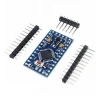
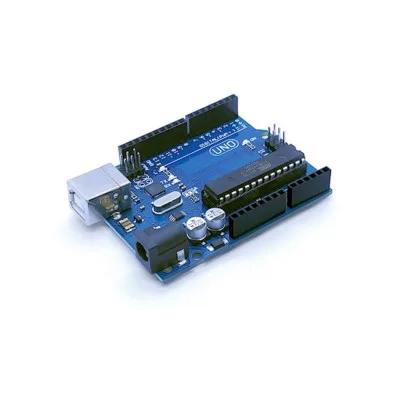

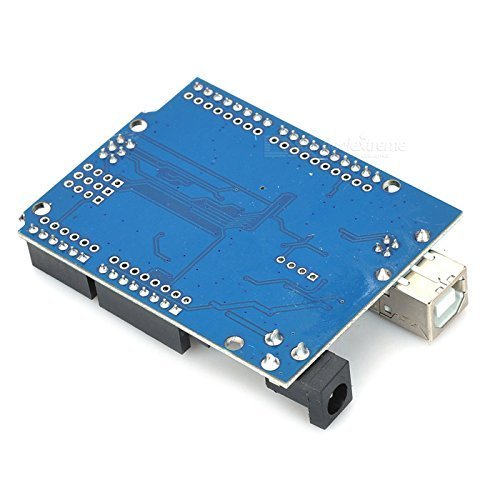
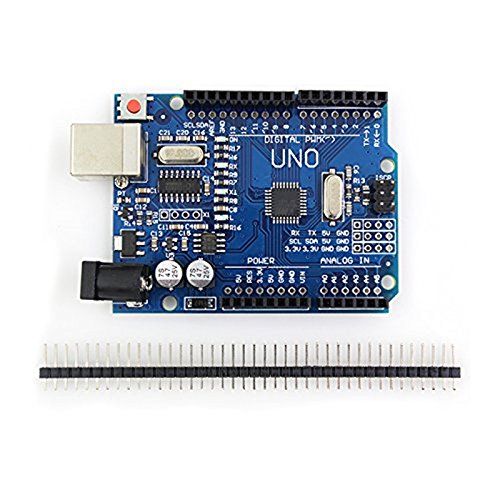


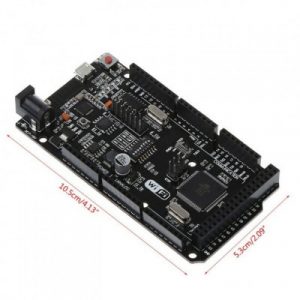

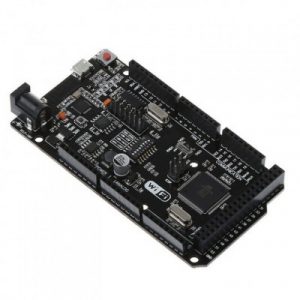



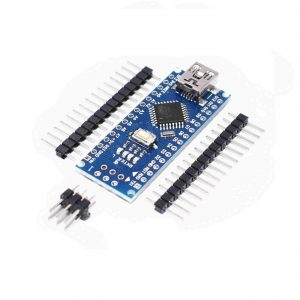

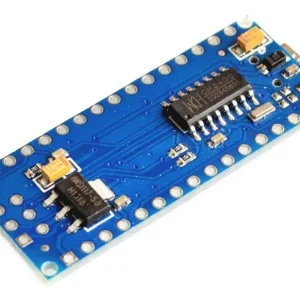
Aman thapar –
Arduino Uno R3
A really reliable board. Works for all applications
Simmtronics –
Arduino Uno Rev3
We received the devices very quickly and without any problems.
J. Jayabalan –
Item worked as per specifications.
Prithvi G –
Arduino Uno
I found Aryabot.in really helpful in all the questions that I had and was able to secure a very good price for 250 Arduino Uno. Thank you
Sumit –
Arduino Uno
Manju –
Received my Ardunio Uno R3 in very good packaging. Getting it to work was as easy as ABC. No soldering issues. Overall, it is a quality product at a reasonable price.
SR Techtronics –
Works like a original Arduino, so it’s absolutely amazing
Rashmi –
If u want to buy Arduino uno you can definitely buy this
Mahender handa –
The product works fine and I think the arduino was looking like original, may be it’s original.
The cord was good for me.
The packaging was good as well.
Cold Cold Screwdriver –
Successfully Running on Program with
Arduino Development Device in Arduino IDLE Program with Led light, WIFI module support
Deepender sukhija –
Arduino Compatible Generic Uno R3
This item was shipped as advertised with all parts included. No retail package though, which is o odd. I will test it soon. Shipping was quick.